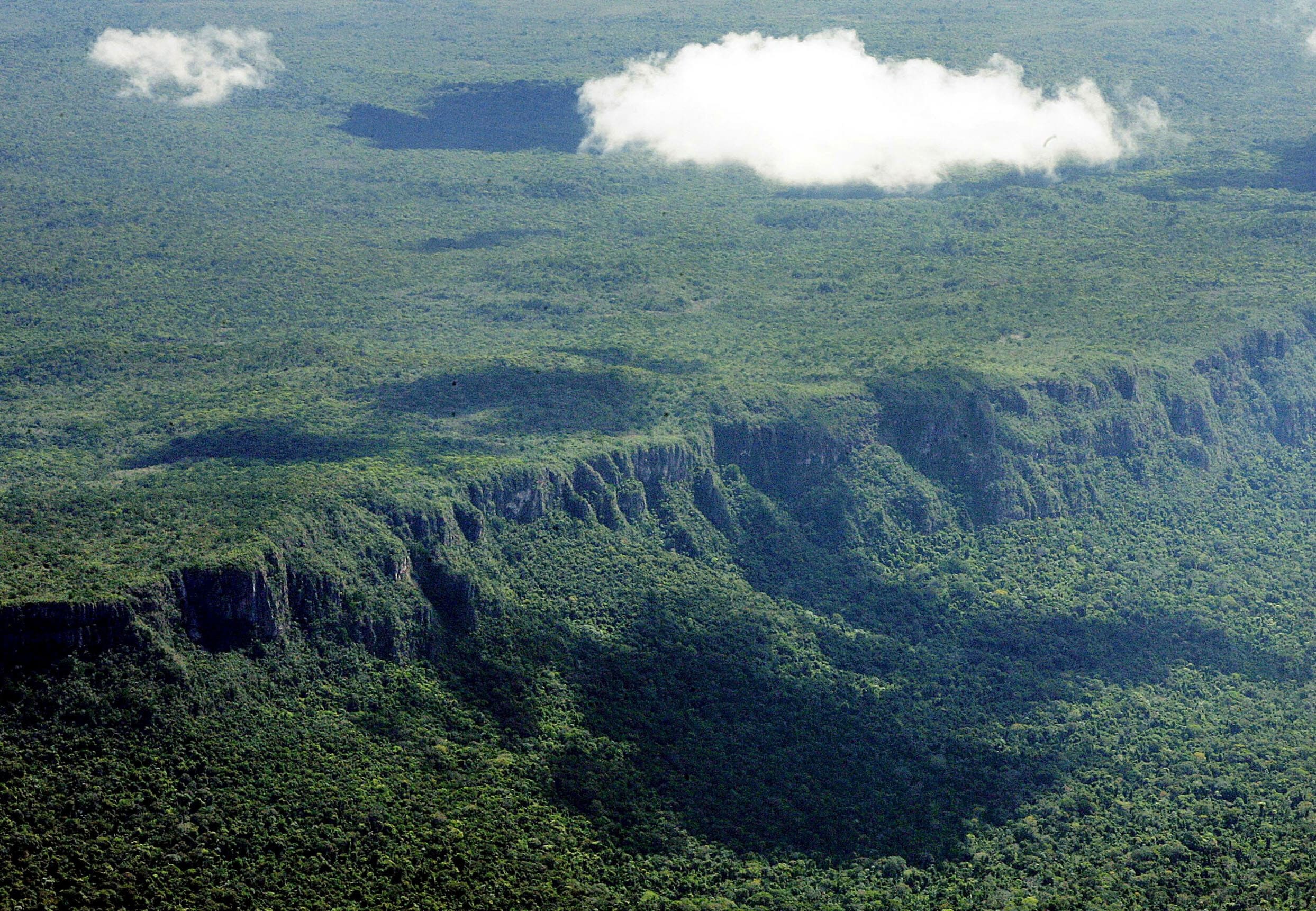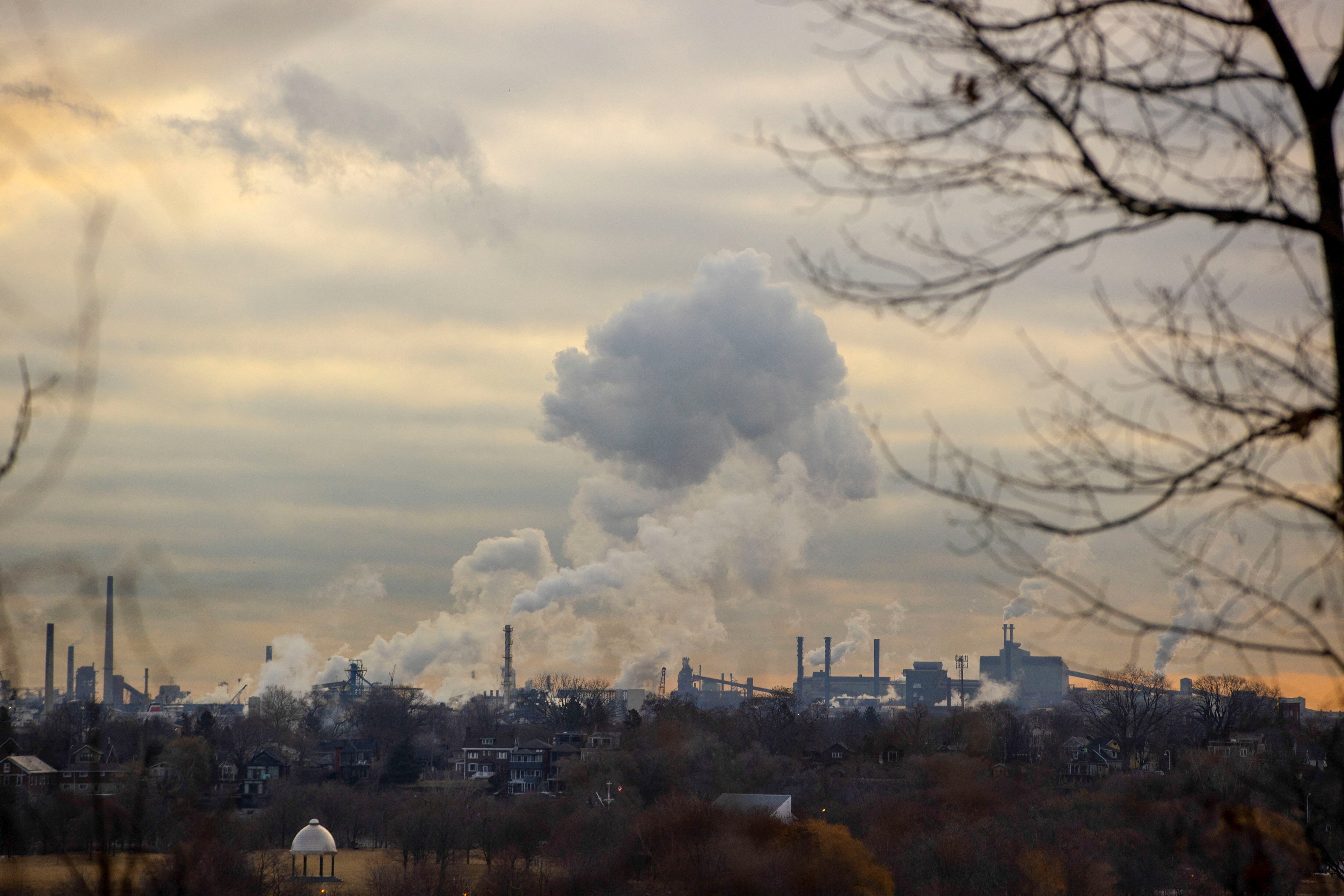When it comes to decarbonizing aviation, aluminium and steel, look to Brazil

Brazil is hoping to preside over a historic mass decarbonization of hard-to-abate sectors including steel, aluminium and aviation.
Image: REUTERS/Ricardo Moraes
Boris Brkovic
Lead, Industry Decarbonization, Materials Sectors, World Economic Forum First Movers CoalitionStay up to date:
Brazil
- Brazil is poised to become a leader in sustainable aviation fuel, advancing towards a greener aviation sector.
- The Brazilian aluminum sector's existing low-carbon production sets the stage for meeting and exceeding international decarbonization goals.
- Leveraging renewable energy and iron ore reserves, Brazil is on track to lead the transformation toward decarbonized iron-making and enabling green steel production globally.
Brazil, the world’s 11th largest economy and home to over 200 million people, has pledged to cut its emissions by 50% by 2030. Home to vast natural resources and growing renewable energy infrastructure, the country is now taking aim at hard-to-abate sectors, including its steel, aluminium and aviation sectors.
Brazil's journey towards low- and zero-emission production is already marked by notable advancements and the potential for significant global impact — so how it handles the coming decarbonization of hard-to-abate sectors stands to establish it as a global example in green industry best practice.
To this end, the First Movers Coalition (FMC) hosted a workshop in Brazil convening over 100 experts to address decarbonization in key industries. They highlighted actionable strategies for Brazil to lead in the production of sustainable aviation fuels, advance in low-carbon aluminium and innovate in green steel manufacturing.
The future of flight: Sustainable Aviation Fuel
Aviation accounts for around 2% of global CO2 emissions and is expected to grow rapidly in the coming years. To reduce the climate impact of flying, the aviation industry needs to switch from fossil-based jet fuel to sustainable aviation fuel (SAF), which can be produced from renewable sources such as biomass and waste.
Brazil's rich history in biofuel production — especially ethanol from sugarcane — and expansive aviation sector – with over 100 airports and a fleet of over 2,000 aircrafts – provide a solid foundation for pioneering SAF. Brazil can leverage its experience and potential in both biofuels and aviation to become a pioneer in the production and use of SAF.
The FMC has set a target for SAF to emit less than 0.5 tonnes of CO2 equivalent per tonne by 2030. To hit this target, Brazil is advancing with several initiatives to produce and use advanced biofuels like hydro processed esters and fatty acids (HEFA), alcohol-to-jet (ATJ) and synthetic paraffinic kerosene (SPK). These fuels are key to slashing greenhouse gas emissions in comparison to conventional jet fuel.
Brazil's commitment is clear as it actively pursues technology development for a cleaner aviation future. These initiatives are just the start:
- The BioQAv project, led by Boeing, Embraer, GOL and World Energy, aims to produce HEFA from used cooking oil and test it on commercial flights in Brazil.
- The BioValor project, led by Amyris, TotalEnergies and LanzaTech, aims to produce ATJ from sugarcane bagasse and test it on commercial flights in France.
- The H2Fly project, led by Siemens Energy, Airbus and EMBRAPII, aims to produce SPK from green hydrogen and carbon dioxide and test it on small aircraft in Brazil.
Aluminium: A model of low-carbon success
Brazil’s aluminium industry has 60 years of history and collective value chain experience. The sector employs around half a million people, is fully vertically integrated, and as such is resilient to external shocks. Due to its natural endowment in bauxite ore, one of the key components in aluminium production, and clean energy sources such as hydropower and biomass fuels, the Brazilian aluminium sector is one of the leading low-carbon aluminium producers in the world.
Brazil already produces aluminium with an average emissions intensity of between 4.5 and 6.5 tonnes of CO2e per tonne of aluminium – more than three times lower than the global average. Thanks to investments by leading domestic and international aluminium producers in cutting-edge alumina refining and aluminium smelters, Brazil should be able to further lower sector emission reductions and lead global industry decarbonization efforts.
The country also has a high aluminium recovery rate, recycling 0.7-0.8 million tonnes per year – nearly as much as primary production. The recycling industry is driven by continuous capital investments in recycling capacities since the 1990s and by the efforts of 800,000 waste pickers collecting aluminium scrap metal. As a result, Brazil is a global leader in aluminium can recycling with a 100% recycling rate achieved in 2022 and has potential to expand onto other aluminium recycling segments.
Brazil’s aluminium suppliers are thus in a strong position to meet the FMC’s ambitious targets for low-carbon aluminium, which require less than 3 tonnes of CO2 emissions per tonne of primary aluminium produced by 2030. However, for the transition to happen at scale, aluminium buyers in Brazil need to create stronger demand signals for low-carbon aluminium amid greater green premiums, especially in sectors such as automotive, construction and packaging. These market signals can additionally be backed by government incentives for low-carbon products, blended finance in support of decarbonization and power purchase agreements securing mid- to long-term access to clean energy.
With megatrends on its side driving global demand for low-carbon products, Brazil has the potential to increase exports of low-carbon aluminium to other markets, given its abundant bauxite reserves and clean energy mix.
Accept our marketing cookies to access this content.
These cookies are currently disabled in your browser.
Steel: Charting a greener path
Steel production is one of the most carbon-intensive industries in the world, accounting for roughly 7% of annual global greenhouse gas emissions. However, steel is also an essential material for many technologies that will deliver decarbonization, such as wind turbines, electric vehicles and advanced manufacturing processes.
Brazil’s access to high-quality iron ore is a crucial advantage for the country in terms of decarbonized ironmaking, which is a key input for near-zero steelmaking. Brazil has the largest iron ore reserves outside Australia and accounts for one-third of all global iron ore exports. It also has ample freshwater and renewable energy resources, which are crucial for producing green hydrogen (H2) – a potential game-changer for decarbonizing ironmaking.
Green hydrogen can replace coking coal or natural gas as a reduction agent in the direct reduced iron (DRI) process, which can then be combined with an electric arc furnace (EAF) powered by renewable energy to produce near-zero emissions steel. The FMC’s targets for near-zero emissions steel require emitting less than 400 kg CO2 emissions per tonne crude steel at 0% scrap deployment and below 50 kg CO2 emissions per tonne crude steel at 100% scrap utilization.
Major steel players active in Brazil have already committed to carbon neutrality by 2050 or earlier and are exploring various pathways to decarbonize their production processes. For example, ArcelorMittal is planning a pilot green hydrogen DRI plant in Hamburg for 2024-25, Ternium is piloting DRI methods in its Mexico operations, Vale is expanding its use of charcoal reductants in cold-briquetted iron and Ternium and Vale have signed an MOU to conduct joint feasibility studies into DRI and other low-carbon pathways.
However, there are still significant challenges to overcome for such projects to come to fruition in Brazil, such as creating a strong demand signal from buyers who are willing to pay a green premium for near-zero emissions steel, securing affordable financing for capital-intensive projects such as CCUS and H2-DRI plants, improving the availability and efficiency of scrap metal recycling and aligning long-term planning with the global role of exporting decarbonized iron to the rest of the world.
Integrating technology, policy and finance
Brazil’s approach to low-carbon industrialization is multifaceted, involving technological innovation, supportive policy frameworks and strategic financial investments. To drive it forward, Brazil needs to enhance its energy infrastructure, diversify supply chains and bolster research and development.
Policies incentivizing green practices and harmonizing economic and environmental objectives will play a pivotal role, as will the mobilization of finance to mitigate investment risks and enhance market viability for low-carbon products.
While Brazil's path to industrial decarbonization is paved with challenges, the opportunities are substantial. By capitalizing on its unique strengths and addressing the complex interplay of technology, policy and finance, Brazil is gearing up to lead a global green industry revolution.
Accept our marketing cookies to access this content.
These cookies are currently disabled in your browser.
Don't miss any update on this topic
Create a free account and access your personalized content collection with our latest publications and analyses.
License and Republishing
World Economic Forum articles may be republished in accordance with the Creative Commons Attribution-NonCommercial-NoDerivatives 4.0 International Public License, and in accordance with our Terms of Use.
The views expressed in this article are those of the author alone and not the World Economic Forum.
Related topics:
Forum Stories newsletter
Bringing you weekly curated insights and analysis on the global issues that matter.
More on Nature and BiodiversitySee all
Tom Crowfoot
October 8, 2025
Constanza Gomez-Mont
October 7, 2025
Dorothy Abade-Maseke and Akim Daouda
October 6, 2025
Marco Lambertini
October 2, 2025
Tom Crowfoot
October 2, 2025
Gareth Francis
October 2, 2025





